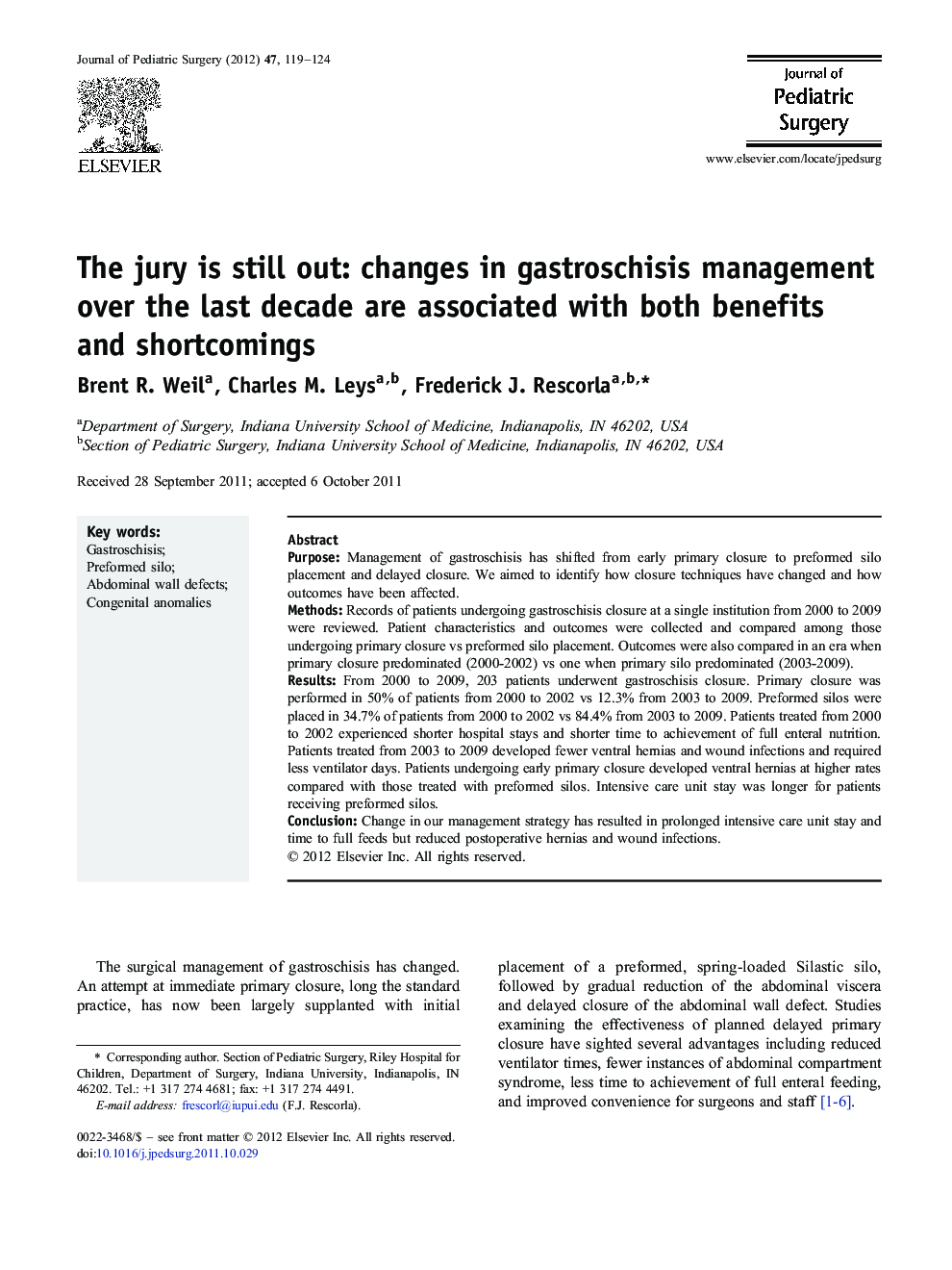| Article ID | Journal | Published Year | Pages | File Type |
|---|---|---|---|---|
| 4156754 | Journal of Pediatric Surgery | 2012 | 6 Pages |
PurposeManagement of gastroschisis has shifted from early primary closure to preformed silo placement and delayed closure. We aimed to identify how closure techniques have changed and how outcomes have been affected.MethodsRecords of patients undergoing gastroschisis closure at a single institution from 2000 to 2009 were reviewed. Patient characteristics and outcomes were collected and compared among those undergoing primary closure vs preformed silo placement. Outcomes were also compared in an era when primary closure predominated (2000-2002) vs one when primary silo predominated (2003-2009).ResultsFrom 2000 to 2009, 203 patients underwent gastroschisis closure. Primary closure was performed in 50% of patients from 2000 to 2002 vs 12.3% from 2003 to 2009. Preformed silos were placed in 34.7% of patients from 2000 to 2002 vs 84.4% from 2003 to 2009. Patients treated from 2000 to 2002 experienced shorter hospital stays and shorter time to achievement of full enteral nutrition. Patients treated from 2003 to 2009 developed fewer ventral hernias and wound infections and required less ventilator days. Patients undergoing early primary closure developed ventral hernias at higher rates compared with those treated with preformed silos. Intensive care unit stay was longer for patients receiving preformed silos.ConclusionChange in our management strategy has resulted in prolonged intensive care unit stay and time to full feeds but reduced postoperative hernias and wound infections.
